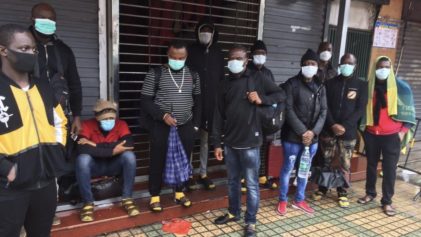Modern Arab Slave Trade
Africa has been devastated economically, socially, politically, and demographically from a combined 13 centuries of chattel slavery at the hands of Europeans and Arabs that involved the removal of 35 million people from their native land, according to some estimates.
Although slavery has been legally abolished, African people are still subjected to chattel slavery in 2013. Anti-slavery International reports that over 50,000 Africans have been sold and owned by Arabs in North Africa. An estimated 660,000 people are subjected to forced labor in sub-Saharan Africa.
In the northwestern African country of Mauritania, a system now exists by which Arab Muslims—called the Bidanes (masters) who disdain physical work—still hold Haratine (enslaved Africans) as property. An estimated 90,000 Mauritanians remain essentially enslaved.
Haratine mothers do not own their children; they are instead passed down through their masters’ estates. Captives are bought and sold, given as wedding gifts, and traded for camels, trucks, or guns. The enslaved Africans perform domestic work, haul water, and shepherd cattle.
Sudan has seen a resurgence of slavery since 1983. During the second Sudanese civil war, as many as 200,000 people had been taken into slavery. The indigenous ethnic groups in South Sudan are often attacked by North African Arabs, who kill men and imprison children and women as slaves. Physical maiming is not uncommon and is usually done to the captives to instill fear and prevent escape.
According to CBS News, slaves have been sold for $50 per person. Many of the perpetrators of these atrocities are mixed-race and Arabized Blacks who have completely rejected their African identities and murder and enslave in the interest of Arabs.
Slavery also occurs in a number of other African countries including Somalia, Mali, Niger, and Chad.


